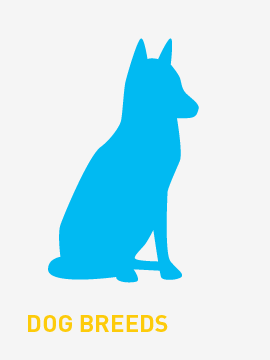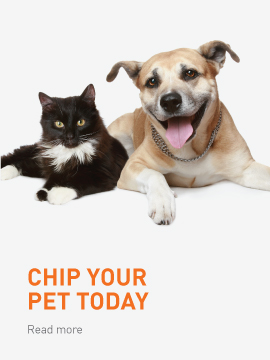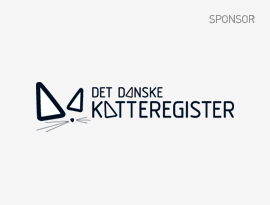The Persian is a long-haired breed of cat characterized by its round face and shortened muzzle. Its name refers to Persia, the former name of Iran, where similar cats are found.Recognized by the cat fancy since the late 19th century, it was developed first by the English, and then mainly by American breeders after the Second World War. In Britain, it is called the Longhair or Persian Longhair. The selective breeding carried out by breeders has allowed the development of a wide variety of coat colors, but has also led to the creation of increasingly flat-faced Persians. Favored by fanciers, this head structure can bring with it a number of health problems. As is the case with the Siamese breed, there have been efforts by some breeders to preserve the older type of cat, the traditional breed, having a more pronounced muzzle, which is more popular with the general public. Hereditary polycystic kidney disease is prevalent in the breed, affecting almost half the population in some countries.
The placid and unpretentious nature of the Persian confers a propensity for apartment living. It has been the most popular breed in the United States for many years but its popularity has seen a decline in Britain and France.
Health
Pet insurance data from Sweden puts the median lifespan of cats from the Persian group (Persians, Chinchilla, Himalayan and Exotic) at just above 12.5 years. 76% of this group lived to 10 years or more and 52% lived to 12.5 years or more. Vet clinic data from England shows an average lifespan of 12-17 years, with a median of 14.1.
The modern brachycephalic Persian has a large rounded skull and shortened face and nose. This facial conformation makes the breed prone to breathing difficulties, skin and eye problems and birthing difficulties. Anatomical abnormalities associated with brachycephalic breeds can cause shortness of breath. Malformed tear ducts causes epiphora, an overflow of tears onto the face, which is common but primarily cosmetic. It can be caused by other more serious conditions though. Entropion, the inward folding of the eyelids, causes the eyelashes to rub against the cornea, and can lead to tearing, pain, infection and cornea damage. Similarly, in upper eyelid trichiasis or nasal fold trichiasis, eyelashes/hair from the eyelid and hair from the nose fold near the eye grow in a way which rubs against the cornea. Dystocia, an abnormal or difficult labor, is relatively common in Persians. Consequently, stillbirth rate is higher than normal, ranging from 16.1% to 22.1%, and one 1973 study puts kitten mortality rate (including stillborns) at 29.2%. A veterinary study in 2010 documented the serious health problems caused by the brachycephalic head.
As a consequence of the BBC program Pedigree Dogs Exposed, cat breeders have too come under pressure from veterinary and animal welfare associations, with the Persian singled out as one of the breeds most affected by health problems. Animal welfare proponents have suggested changes to breed standards to prevent diseases caused by over or ultra-typing, and prohibiting the breeding of animals outside the set limits. Apart from the GCCF standard that limits high noses, TICA and FIFe standards require nostrils to be open, with FIFe stating that nostrils should allow "free and easy passage of air." Germany's Animal Welfare Act too prohibits the breeding of brachycephalic cats in which the tip of the nose is higher than the lower eyelids.
Polycystic kidney disease (PKD) which causes kidney failure in affected adult cats has an incidence rate of 36–49% in the Persian breed. Cysts develop and grow in the kidney over time, replacing kidney tissues and enlarging the kidney. Kidney failure develops later in life, at an average age of 7 years old (ranging from 3 to 10 years old). Symptoms include excessive drinking and urination, reduced appetite, weight loss and depression. The disease is autosomal dominant and DNA screening is the preferred method of eliminating the gene in the breed. Because of DNA testing, most responsible Persian breeders now have cats that no longer carry the PKD gene, hence their offspring also do not have the gene. Before DNA screening was available, ultrasound was done. However, an ultrasound is only as good as the day it's done, and many cats that were thought to be clear, were in fact, a carrier of the PKD gene. Only DNA screening and then breeding negative to negative for the PKD gene will produce negative kittens which effectively removes this gene from the breeding pool has allowed some lines and catteries to eliminate the incidence of the disease.
Hypertrophic cardiomyopathy (HCM) is a common heart disease in all cats. It is hereditary in the Maine Coon and American Shorthair, and likely the Persian. The disease causes thickening of the left heart chamber, which can in some instances lead to sudden death. It tends to affect males and mid to old-aged individuals. Reported incidence rate in Persians is 6.5%. Unlike PKD which can be detected even in very young cats, heart tests for HCM have to be done regularly in order to effective track and/or remove affected individuals and their offspring from the breeding pool.
The age at the first cardiac event was significantly lower in Maine Coons (2.5 years) versus other breeds (7 years). In Sphynx, the age at the time of diagnosis was 3.5 years. Concerning sudden death solely, Maine Coon cats died younger than other breeds. No sudden deaths were reported in Chartreux and Persian cats in this study. Sudden death was observed in only 3 breeds—Maine Coon, Domestic Shorthair, and Sphynx. All cats surviving longer than 15 years of age were Domestic Shorthair, Persians, or Chartreux.
Early onset Progressive retinal atrophy is a degenerative eye disease with an autosomal recessive mode of inheritance in the Persian. Despite a belief among some breeders that the disease is limited to Chocolate and Himalayan lines, there is no apparent link between coat color in Persians and the development of PRA. Basal cell carcinoma is a skin cancer which shows most commonly as a growth on the head, back or upper chest. While often benign, rare cases of malignancy tends to occur in Persians. Blue smoke Persians are predisposed to Chédiak-Higashi syndrome. White cats, including white Persians, are prone to deafness, especially those with blue eyes. Persians are more prone to side effects of ringworm drug Griseofulvin.
As with in dogs, hip dysplasia affects larger breeds such as Maine Coons and Persians. But the small size of cats means that they tend not to be as affected by the condition. Persians are susceptible to malocclusion (incorrect bite), which can affect their ability to grasp, hold and chew food. Even without the condition the flat face of the Persian can make picking up food difficult, so much so that specially shaped kibble have been created by pet food companies to cater to the Persian.
Other conditions which the Persian is predisposed to are listed below:
- Dermatological – Primary seborrhoea, Idiopathic periocular crusting, Dermatophytosis(ringworm), Facial fold pyoderma, Idiopathic facial dermatitis (aka dirty face syndrome), Multiple epitrichial cysts(eyelids)
- Ocular – Coloboma, Lacrimal punctal aplasia, Corneal sequestrum, Congenital cataract
- Urinary – Calcium oxalate urolithiasis (Feline lower urinary tract disease)
- Reproductive – Cryptorchidism
- Gastrointestinal – Congenital portosystemic shunt, Congenital polycystic liver disease (associated with PKD)
- Cardiovascular – Peritoneopericardial diaphragmatic hernia
- Immunological – Systemic lupus erythematosus
- Neurological – Alpha-mannosidosis
- Neoplastic – Basal cell carcinoma, Sebaceous gland tumours
Although these health issues are common, many Persians do not exhibit any of these problems.
In popular culture
- A species of Pokémon is named after the breed
- Mr. Tinkles, the antagonist from Cats & Dogs and Cats & Dogs: The Revenge of Kitty Galore
- Snowbell from Stuart Little
- The Cat King from The Cat Returns
- Crookshanks, Hermione's magical familiar from the Harry Potter series, appears to resemble a Persian cat. Professor Dolores Umbridge also has a fondness for Persians, with many decorative plates in her office depicting them. Her Patronus is also a Persian.[49]
- The white Persian cat belonging to Ernst Stavro Blofeld in the James Bond series
- In the animated movie Over the hedge there is a Persian cat named Tiger in the movie.
- The original Mr. Bigglesworth, belonging to Dr. Evil, a spoof of the aforementioned James Bond villain in the Austin Powers movies.
- In the show My Little Pony Friendship is Magic, Rarity, one of the main characters, has a pet Persian cat named Opalescence.
- Duchess, the Hoggetts' spoiled cat and the main antagonist of Babe.
- Sassy, the family's Himalayan cat in the book Homeward Bound: The Incredible Journey written by Sheila Burnford and movies of the same name. Homeward Bound: The Incredible Journey and Homeward Bound II: Lost in San Francisco.
- Mme. Rubens-Chatte (voiced by Hermione Gingold), she was Meowrice's Sister from Gay Purr-ee .
The classic animated character Garfield is an exotic short haired Persian cat.















































